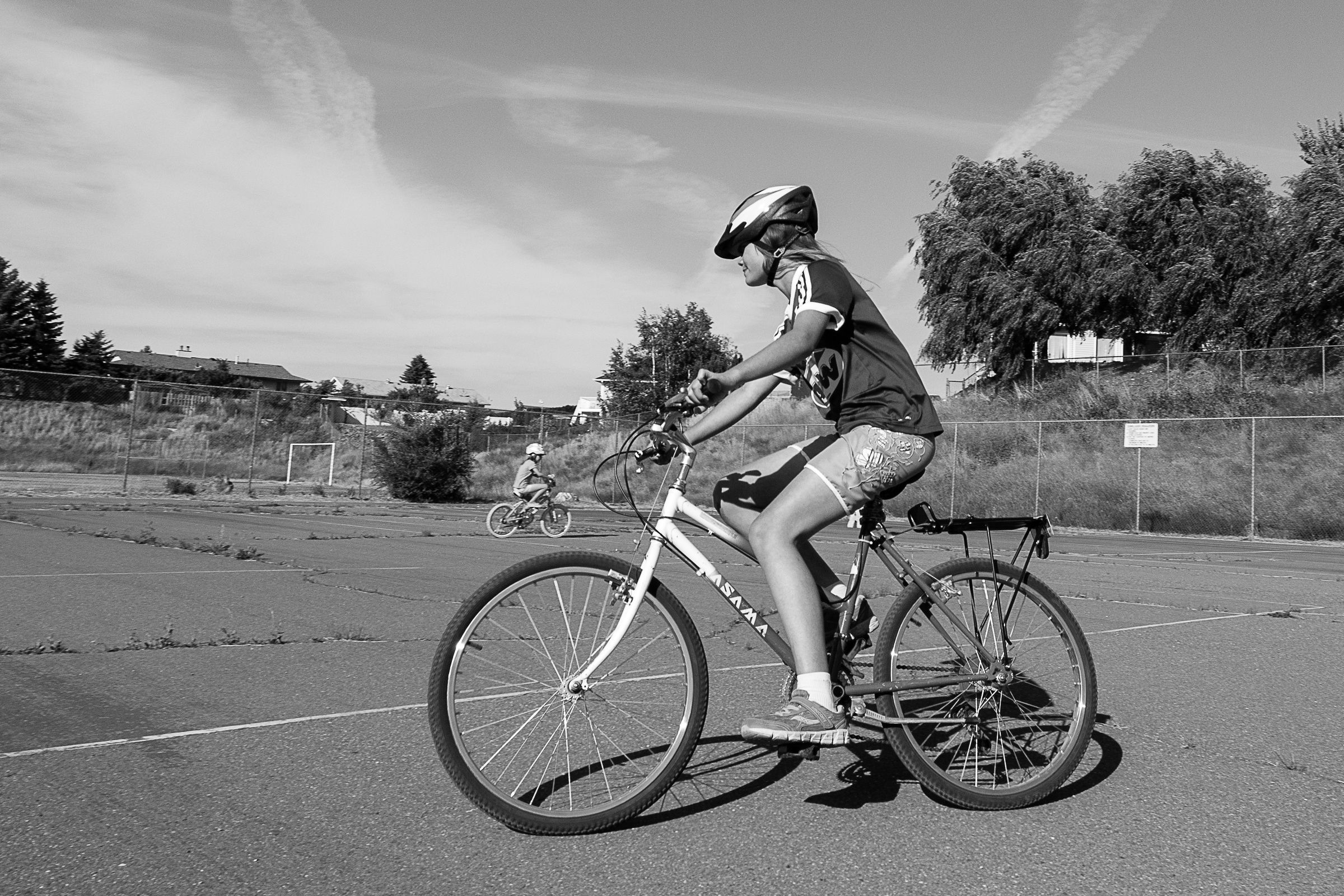A new lens has entered my meagre kit and rather than get to know it slowly, I decided it would be fun to jump in with both feet.
What was my great idea to facilitate this?
I would shoot only with my new 17-35mm wide-angle Nikon lens for two weeks.
That way I would learn all the ins and outs of my new lens and really get to know it well.
Upon further thought, I decided that two weeks was kind of wimpy. Summer was coming, and I felt a two-month commitment to the new lens would be much more challenging.
This idea didn’t just fall from the sky.
I belong to a group of photographers that have online discussions.
When featuring a photographer from our group, one of the questions asked is, “If you could only use one lens for year, which one would it be?”
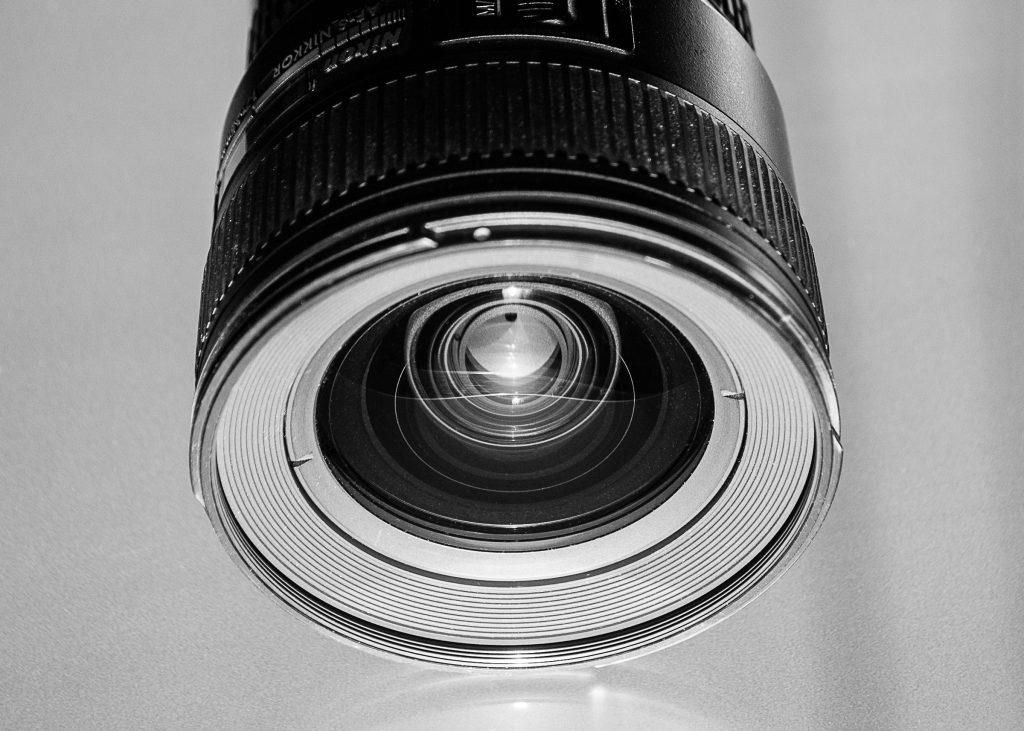
Leanne Cleaveley’s new17-35mm Nikkor Wide-Angle Zoom Lens. Photograph by Leanne Cleaveley
This question terrifies me as I love macro photography, but I couldn’t shoot with a macro lens exclusively. How would I get great shots of my kids? Plus, I love my longer focal length telephoto zoom lens for photographing birds and other critters, but I would miss so many great shots by only having a telephoto lens (not to mention I’d probably back off of a cliff trying to get things into the frame).
I was afraid that I just couldn’t pick one lens for an entire year.
Yet, here I was committing to just one lens for two months! I was scared that I wouldn’t be able to stick to my goal.
I sadly emptied my camera bag of all but the one lens and my external flash and started on my way.
I was a little nervous and noticeably lighter. Maybe this one lens thing wasn’t such a bad idea after all!
This personal challenge meant that I would shoot exclusively with my wide-angle lens for the next two months.
All my shots of family and friends, backyard flora, sunsets, mountains, cityscapes, action shots, and night photos would all be taken with the wide-angle lens.
I stuck to the challenge precisely, except for two events that required the use of other lenses – one was a family portrait session that I had agreed to before I committed to the challenge, and the other was a boat ride which included my children tubing on the water from quite some distance away (I just had to zoom in on the looks of surprise, fear, and anguish on those little faces).
Otherwise, I stuck to the program. And it wasn’t always pretty!
After two months of exclusively using my wide-angle lens, I feel like I have learned enough to share some tips and ideas with others who are just getting to know this lens.
In this guide, you will:
- learn what defines a lens as a “wide-angle”;
- learn how using a wide-angle lens affects the perception of relative size, and the appearance of depth, in photographs;
- learn some of the quirks of wide-angle lenses, and how they can be avoided or used to enhance your photos; and
- understand why wide-angle lenses are better suited to some photography genres more than others.
What Is A Wide-Angle Lens?
The first thing that strikes you when you peer through a wide-angle lens attached to your camera is how much of the scene in front of you is apparent in your viewfinder.
It takes my breath away still when I put the camera to my eye and see all of that foreground, scenery, and sky in my field of view.
Simply put, you have a wider view of things in your frame.
But for those of you that like a more precise definition of what a wide-angle lens is… It is a lens with a short focal length. What is focal length? It is the distance from the converging focused image on a lens set to infinity, to the image sensor (or film) inside your camera. The distance is stated in millimeters. The shorter that distance is, the wider the viewing angle will be.
It takes my breath away still when I put the camera to my eye and see all of that foreground, scenery, and sky in my field of view.
Wide-angle lenses are commonly defined as lenses with a focal length of less than 35mm. They can delve into the realm of ultra-wide angle lenses (shorter than 15mm), which includes fish-eye lenses.
All of these lenses aim to get more of the scene into the frame. You need to be aware of some of the quirks and perks of these lenses to appreciate their full potential.
Recommended Reading: Interested in taking beautiful landscape photographs? Grab a copy of Photzy’s guide, Complete Guide to Landscape Photography
Things Are Not Always What They Appear
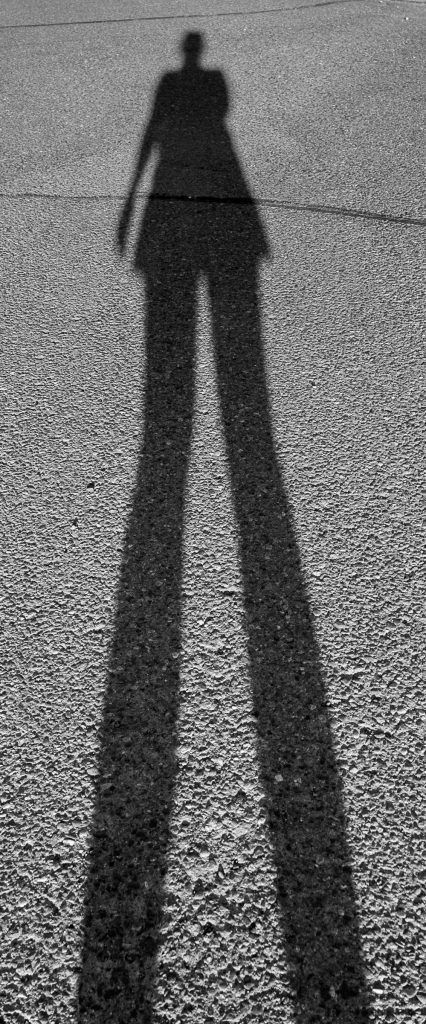
In this image, an evening shadow looks even longer when shot with a wide-angle lens!. Photograph by Leanne Cleaveley
The first time I used my new wide-angle lens was to get a shot of the sunset from the view off of our deck in the backyard.
My heart skipped a beat as I looked at the scene through the viewfinder. There was so much sky!
Upon further examination, and after taking several more shots, I realized that the photos had a feeling of depth that was missing from my photos taken with my other lenses.
What creates this perception of depth?
It has to do with the comparative size of objects that are close to you and those that are farther away.
Even if all the clouds in the sky are exactly the same size, those that are closer appear much larger than those that are farther away when viewed through a wide-angle lens.
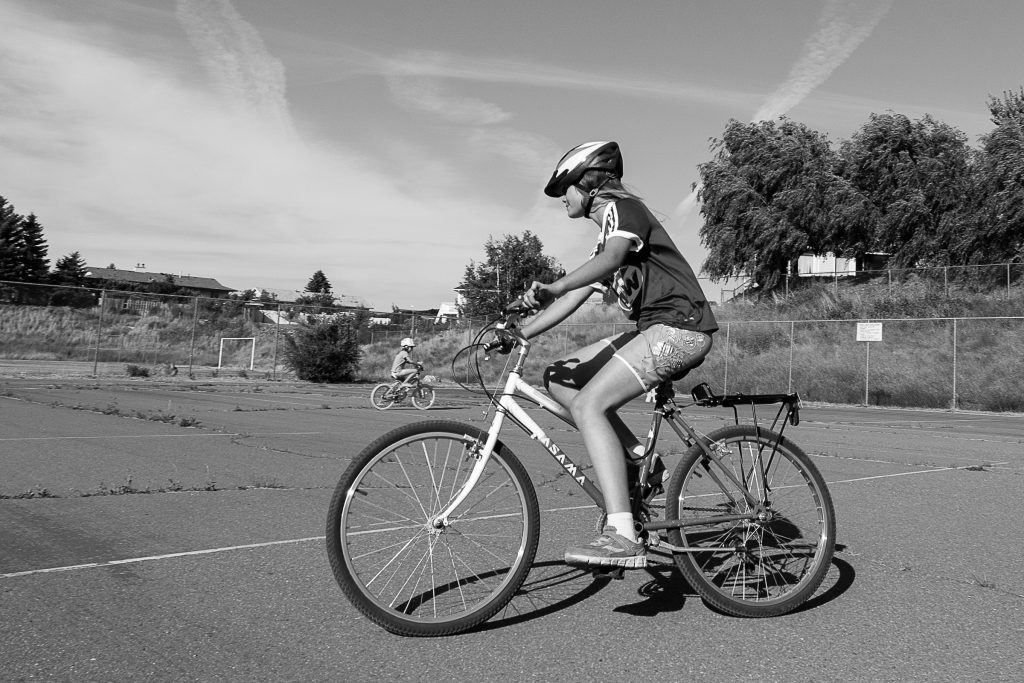
This photo is an example of how wide-angle lenses affect the relative size of objects in a photograph. The girl closest to the camera appears much larger than the second girl who is further away. This is because the girl in the foreground is much closer to the camera and lens (but in reality, the two girls are relatively close in size). Photograph by Leanne Cleaveley
Having multiple objects, at different distances from the camera, presented within the photograph can enhance the perception of depth when using a wide-angle lens.
It is often a good idea to try and get something in the foreground, the middle ground, and in the background if you want to accentuate the feeling of depth.
This fun aspect of wide-angle lenses – making closer objects appear larger relative to objects that are farther away – can be used to create an exaggerated appearance of size or length.
Key Lesson: Wide-angle lenses make objects that are close appear larger, and those further away much smaller. This can be helpful for adding a sense of depth to your photographs and even exaggerating an object’s size relative to its surroundings.
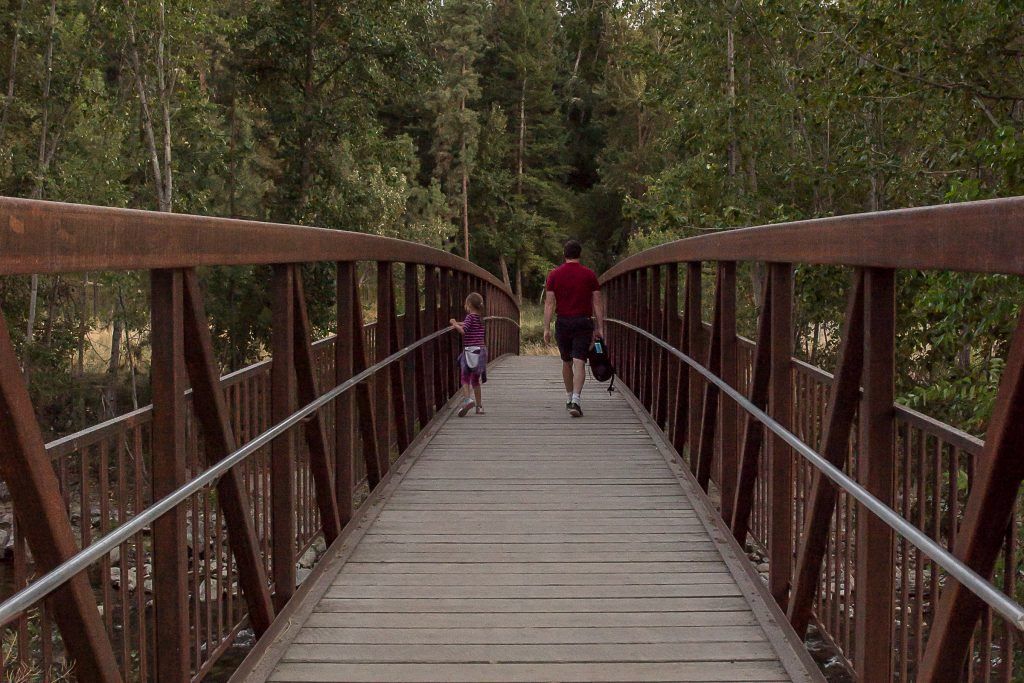
The exaggerated sense of scale can make leading lines appear more dramatic as well, as seen in this image. Photograph by Leanne Cleaveley
The very thing that can create depth, and interesting lines, in your shots can also work against you (depending on the type of photograph that you are taking).
Lines that get much smaller and curve away (due to the distorting effect of the lens) can make buildings appear crooked.
Key Lesson: Being aware of the type of distortion that wide-angle lenses can create can help you make these quirks work for and not against you when taking photos.
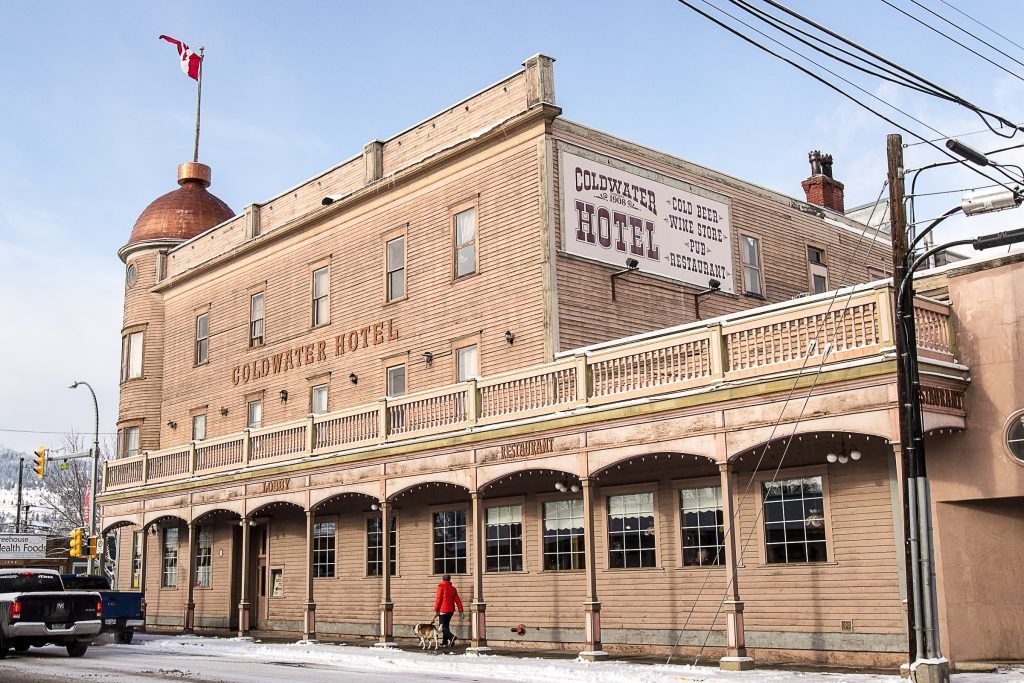
In this image, the far left of the building and the pole on the right curve inwards at the top of the photograph. This type of wide-angle lens distortion might be desirable. However, if it isn’t, it can sometimes be fixed within an editing program. A tool such as the ‘Transform tool’ in Lightroom can be used to fix the converging lines created by the wide-angle lens. Photograph by Leanne Cleaveley
Close-Ups
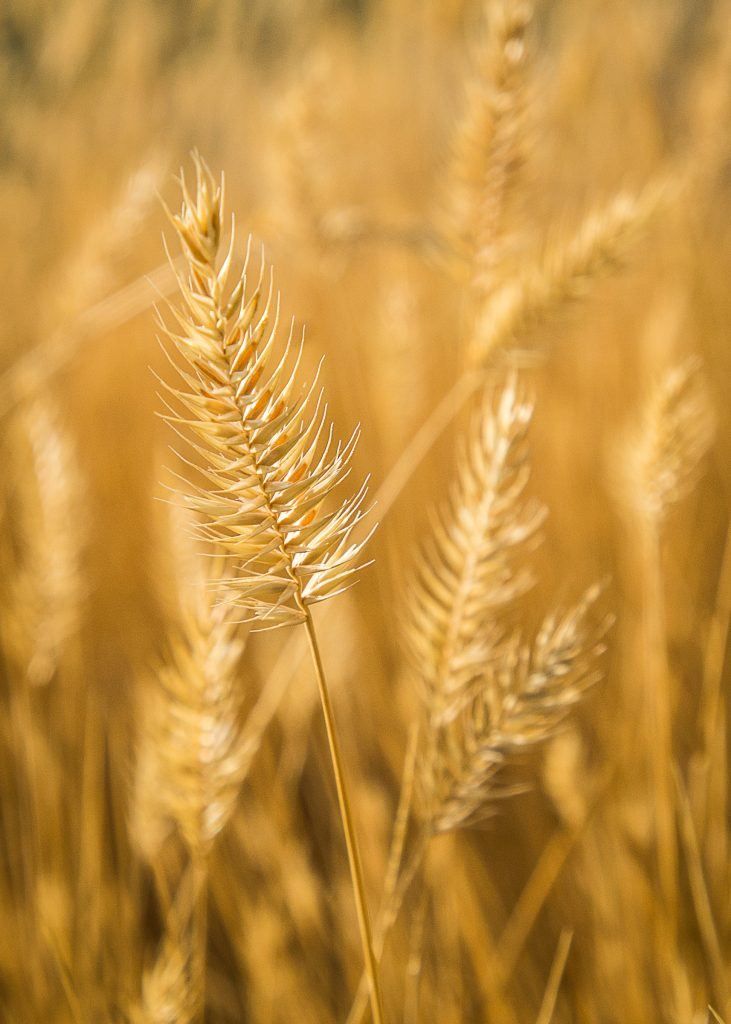
Photograph by Leanne Cleaveley
The thing that made me really fall in love with my new wide-angle lens was how close I could get to my subjects.
Macro photography is a favorite photographic genre of mine, and I was sure that I would miss the macro shots that could only be taken with a macro lens while completing this challenge.
So when I realized that I could get really close to my subjects with my new wide-angle lens and catch some great close-up shots, I was elated.
How close can you get? Typically, you can get very close (depending on the particular lens).
In the case of my 17-35mm lens, I can focus down to within a few inches of my subject.
Not only can you get close, you should get close, because you have so much more of the scene included in the frame.
It’s necessary for you to include objects in the foreground, especially with a landscape photograph created with a wide-angle lens. You need that foreground object to help accentuate that sense of depth and provide balance to your photographs.
This is something that I struggle with personally, and owning a wide-angle lens is now helping me to develop this skill.
Wide-Angle Landscape Photography
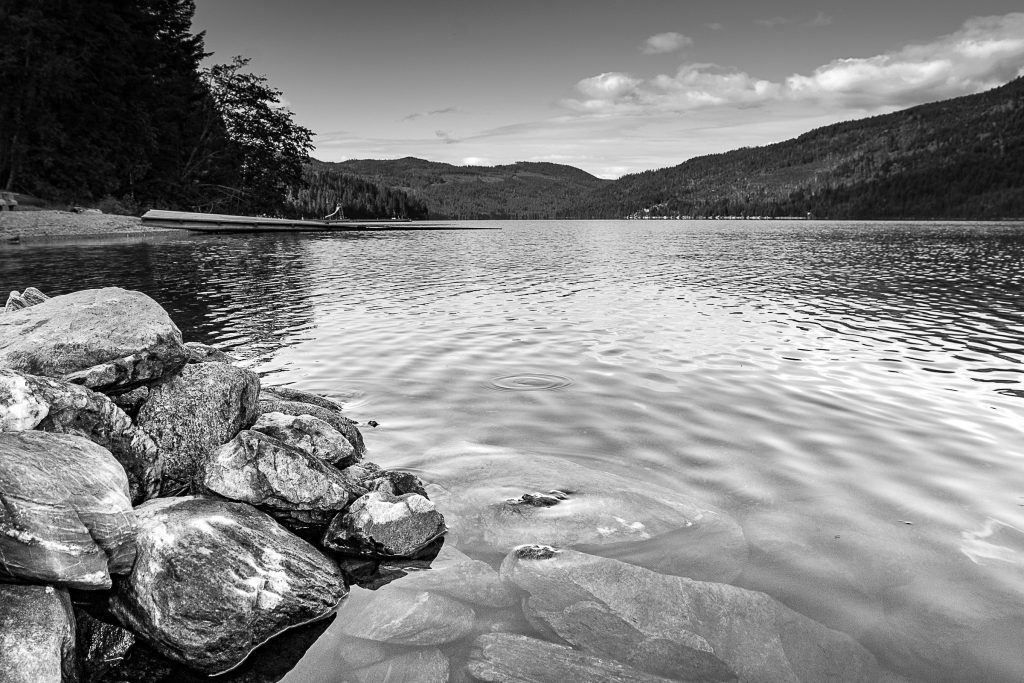
Photography by Leanne Cleaveley
Naturally, I should mention landscape photography when talking about a wide-angle lens.
This is a very common lens to use for this type of photography, and it is clear why this is so.
As I mentioned earlier, the wide-angle lens allows you to get more of the scene into the frame. This is a clear advantage for those attempting to shoot sweeping vistas of landscape.
You need that foreground object to help you accentuate that sense of depth and provide balance to your photographs.
Also, as previously mentioned, the lens can create the perception of depth, which helps the viewer to feel as if they are right there in the landscape.
Now, the lens alone doesn’t do this. The photographer must consider leading lines, foreground objects, and the placement of subject within the frame.
But the use of the wide-angle lens is the lens to help you in these respects.
I personally avoided landscape photography before acquiring my new wide-angle lens (unless I was snapping vacation scenes).
However, I found myself compelled to venture out with this new lens and give landscape photography a whirl.
I must say that I find myself drawn to this type of photography now, and I am happy to add another genre to my personal repertoire.
Recommended Reading: Interested in taking beautiful landscape photographs? Grab a copy of Photzy’s guide, Complete Guide to Landscape Photography.
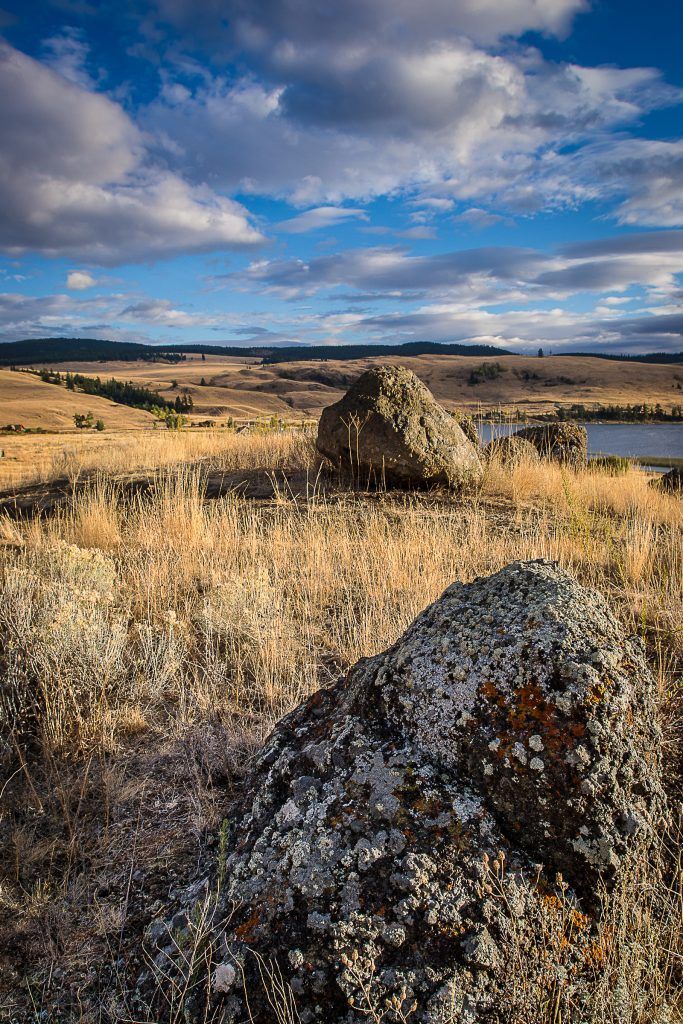
Photograph by Leanne Cleavaley
I should add that another challenge that I have faced when using my wide-angle lens is known as “lens flare.”
For the very reason that a wide-angle lens is wonderful, it can also be challenging. The wide-angle lens typically has a large area of exposed glass on the front element. This makes lens flair more of an issue than with other lenses.
A lens hood helps, but I still find that I have to play with my camera angles, and even provide extra shade such as holding up a piece of cardboard, to avoid getting those annoying lens flare spots across my photo.
Key Lesson: Lens flare shows as overexposed hazy spots across your photograph. They are caused by the sun, or bright light, hitting the front glass element on a lens. They can be avoided by using a lens hood, and also by checking the angle of the light so that it doesn’t hit the front glass element on your camera lens.
Wide-Angle Lenses And The Night Sky
The night that I decided to aim my camera skyward in an effort to capture the Milky Way was the night I realized that I loved this new lens even more.
I had been doing some reading about photographing the Milky Way, and I realized that I now had everything that I needed to pull this off.
The tools needed for beginning astrophotography (or photos of the night sky) are really simple.
You need a sturdy tripod, a camera that allows you to take photos at slow shutter speeds, and a lens that has a large aperture.
A wide-angle lens is perfect for this task, as most of them have a large maximum aperture, which allows the most light to enter the camera.
To give this a try with your wide-angle lens, set your lens-focusing ring to infinity. Use a remote trigger (or alternatively, set the camera to a two-second delay) and set your shutter speed to 15 seconds or more.
You are ready to get some great shots of the night sky.
Key Lesson: Wide-angle lenses are well suited for night photography because of their larger maximum aperture, and their ability to capture more of the night sky than a standard lens.
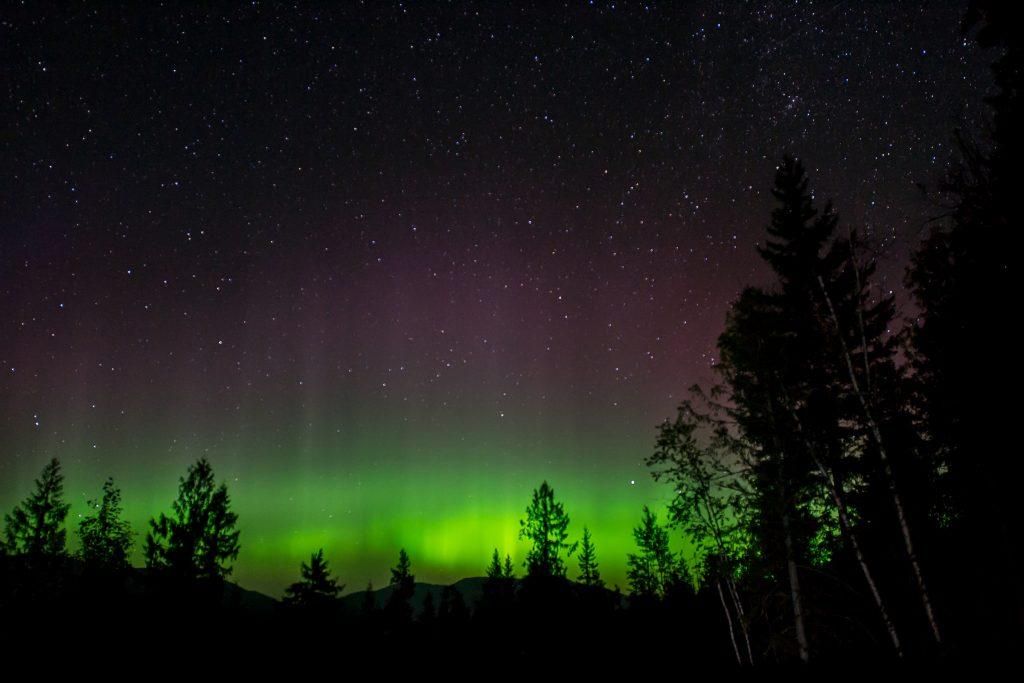
Photograph by Leanne Cleaveley
Wide-Angle Lenses And Photographing People
If you have done any reading about wide-angle lenses before this guide, then you will know that photographing people while using a wide-angle lens doesn’t generally mix well.
But what does that really mean?
Well, because of all the properties of the wide-angle lens (as we previously discussed), portraits and close-up shots of people can appear distorted and odd looking.
Wide-angle lenses exaggerate the appearance of objects, so things closer to the lens appear larger. When the thing closest to the lens is a person’s nose… You can see where I am going with this, right?
Because of all the properties of the wide-angle lens, portraits and close-up shots of people can appear distorted and odd looking.
You may not want to use this lens for portraiture, but that doesn’t mean you should always avoid taking shots of people with a wide-angle lens. It just means that you should be thoughtful about how you include them in your photos.
The image below, which includes a child in the foreground, works well with the use of a wide-angle lens, and may even be enhanced because of it.
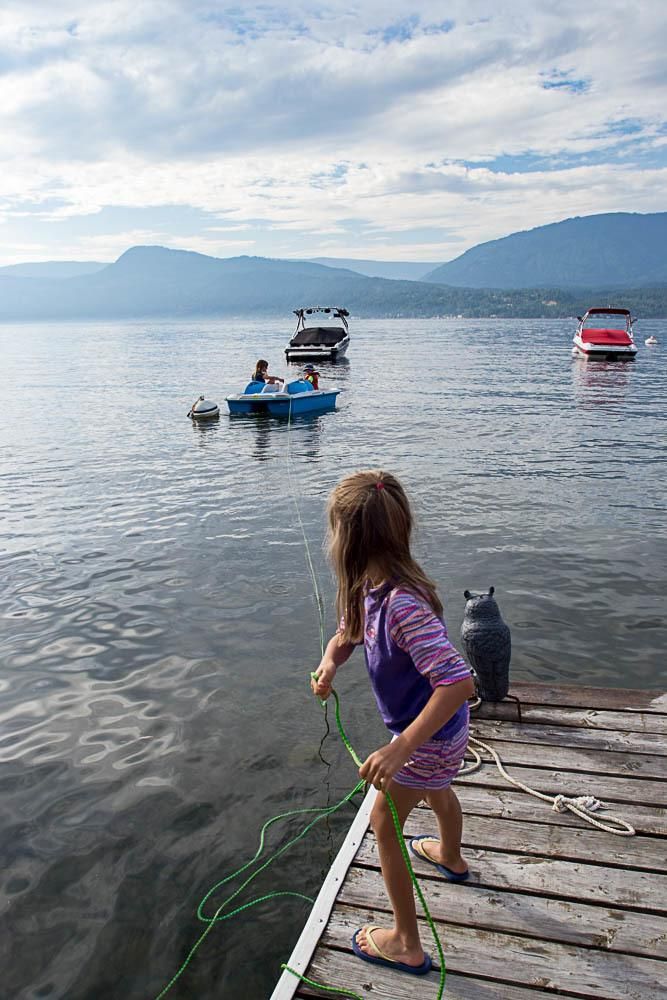
Photograph by Leanne Cleaveley
With the wide-angle lens, I could get very close to the child and still include a lot of the environment around her, which was so important to tell the story of what was going on.
Also, the exaggerated perspective of the long rope out to the boat (the boat appears smaller and farther away as a result) makes the photo even more interesting.
In the end, your objective should be your guide as to whether you want to photograph people with a wide-angle lens.
I have seen many very interesting photos of people taken with a wide-angle lens.
Key Lesson: Wide-angle lenses can create problems when shooting serious portraits of people. They can make things that are closer to the camera seem larger and don’t always accentuate facial features in a flattering way.
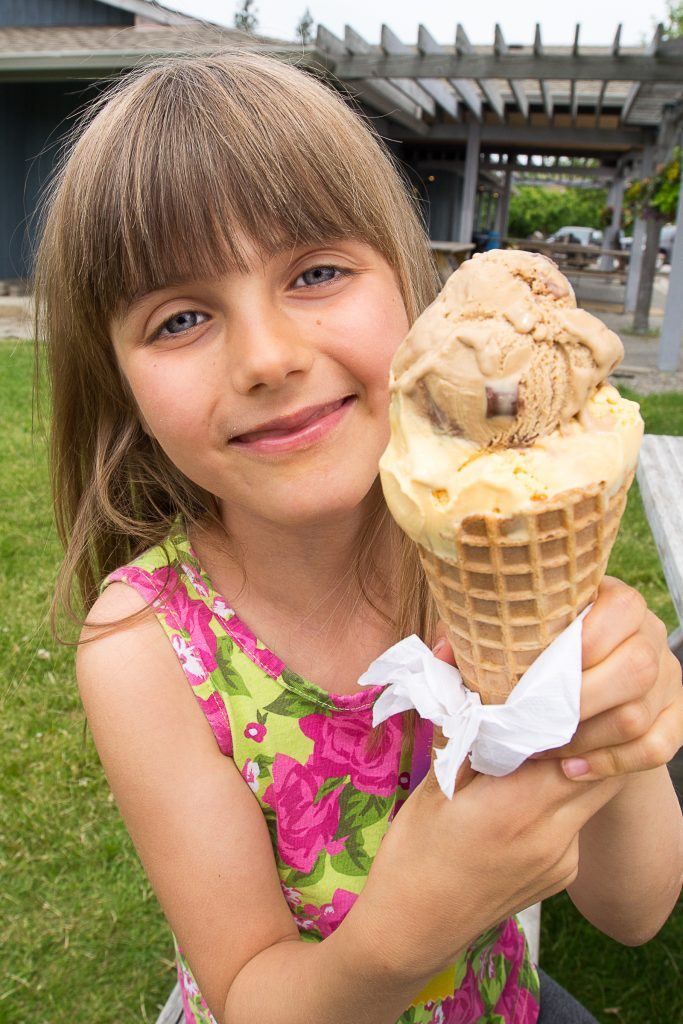
Photograph by Leanne Cleaveley
The ice cream is as big as her head! This image (above) is a great example of how the exaggerated perspective from a wide-angle lens can add a creative element to a photograph.
Recommended Reading: If you’d like to learn how to create amazing portraits, grab a copy of Photzy’s premium guide, Art of Portrait Photography.
My Revelation
Remember at the beginning of this guide, when I asked you about the crazy question of what lens you would use if you could only use one for a year?
Well, here is my new revelation. If I could only use one lens, it would be the wide-angle lens! I know this now because it is the lens I leave on my camera.
Once in a while I switch out to my telephoto zoom lens, and I know that I will always have a love for macro shots.
But this new wide-angle lens has become my “go-to” lens for most situations.
This is not to say that the lens doesn’t have its challenges: like distortion and a proclivity for lens flare.
But once you know this, and can appreciate the positive aspects such as a larger portion of the scene in the frame, larger maximum aperture, and a short minimum focusing distance, you can really make this lens work for you.
I encourage you to give a wide-angle lens a try if you haven’t already. And don’t be afraid to try out a new field of photography, such as night photos or landscapes, if you haven’t already.
Another take-away from my experiment is that shooting with only one lens for a set period of time really ‘forces you’ to get to know that particular lens – its quirks and tendencies. You become a bit more of an expert with it.
Above all, get out there, play, and have fun!


